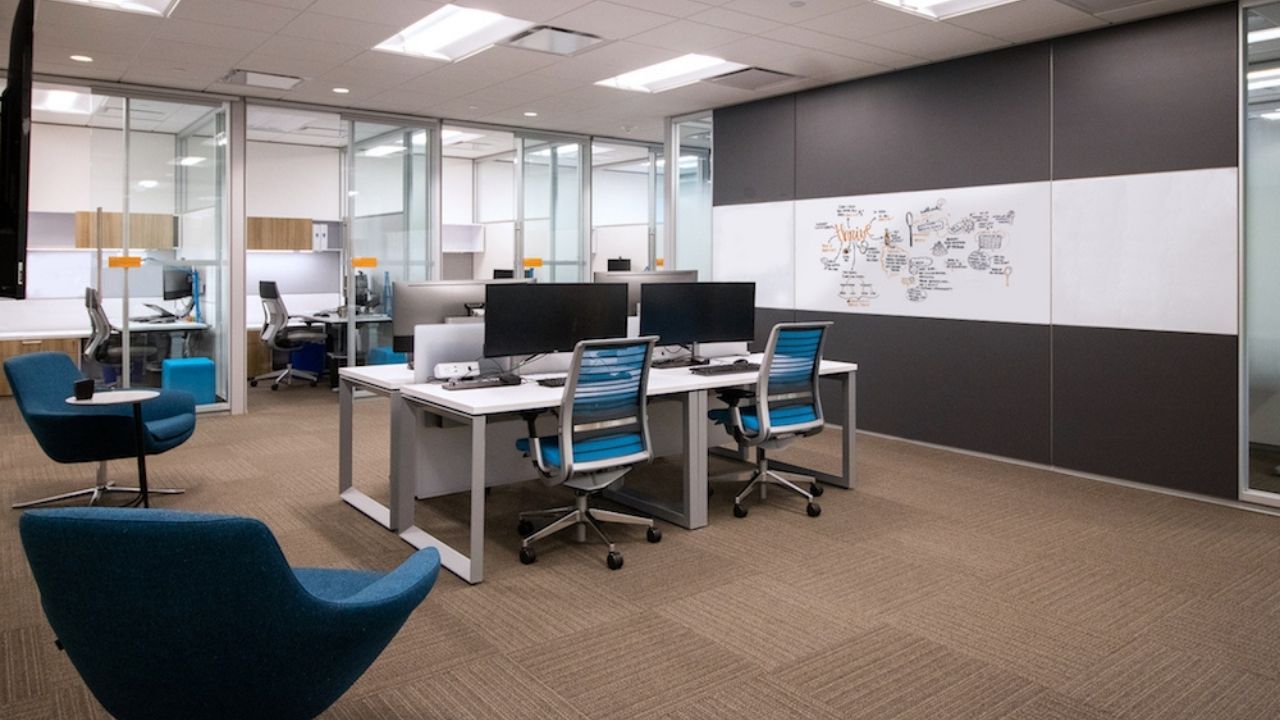- The current approach to managing an organization’s workplace is often at great odds with the notion of flexibility and rapid change.
- A different approach to the execution and delivery of effective workspace is needed for organizations to truly become agile and flexible.
- PDR’s Larry Lander offers an in-depth guide to creating a flexible workplace that will serve organizations far into the future.
This article was written by Larry Lander and was originally published on Work Design Magazine.
The pandemic has amplified a couple of concepts: 1) change can happen rapidly, often seemingly without warning, and 2) the enormous energy needed to define a new normal can be taxing and stressful for any organization—even debilitating for some. The need for the flexible workplace and the ability to accommodate change are hallmarks of the nimblest organizations. However, the current approach to managing an organization’s workplace is often at great odds with this notion of flexibility and rapid change.
A different approach to the execution and delivery of effective workspace could give an enormous boost to business flexibility and a new mindset about what a workplace can be. What if we could radically rethink our current workplace design and execution model, to create a “good enough” solution and provide a foundation for a flexible, sustainable platform that would serve the organization far into the future?
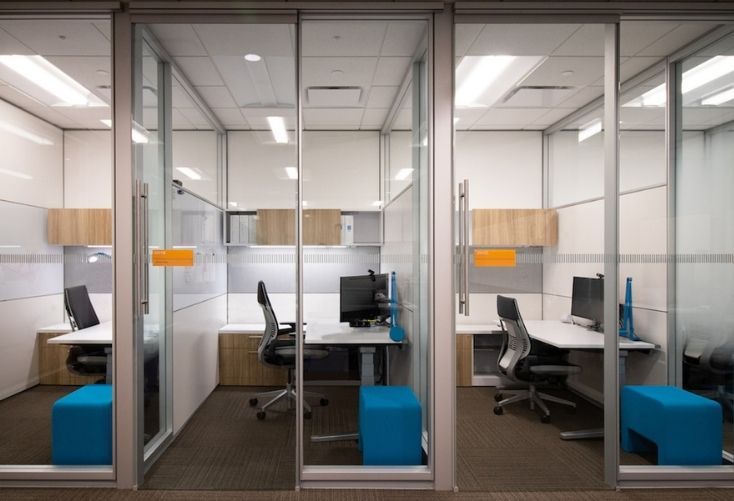
Current Conditions as a Driver
The need for a different workplace usually begins within the senior leadership of an organization. Often an event in the business cycle—most likely a lease expiration or other real estate deadline—will create the demand to better understand the organization’s physical needs. The cost, time, and potential disruption associated with significant workplace projects quickly put the real estate “event” front and center at the highest levels of the company.
The very first step is usually to develop a coherent strategy about an organization’s workplace needs. Although there is an arithmetic component to this—how much do we need? —more questions often revolve around the even higher-level strategic questions: Why do we have an office and what is it doing for us? How do we use it and why? How should we use it? The pandemic has brought these questions front and center and amplified the importance of developing a true workplace strategy and engaging a facilitator for that process.

Once a program has been developed, it’s time to understand the market and, unless a prior relationship has been established, engaging a real estate broker is often the next important step to help negotiate the terrain. Their knowledge of local markets, experience with landlords and building owners, and marketplace perspective can prove invaluable.
This first step of starting with a real estate broker may often be the first of many decisions made through an arduous request for proposal process. From there the process moves to an architect, may or may not include an independent third-party project manager, and finally to a general contractor to oversee the construction as well as a host of other consultants, subcontractors, furniture providers, and finally, even the movers themselves.
Finally—and for significant projects, this can be years in the making—an organization moves into their new beautifully bespoke space. However, too often, just like buying a new car and driving it off the lot, that new space begins to depreciate. It goes from ‘we love this and we’re proud of it and it’s great for what we do!’ Then to ‘it’s pretty good and still looks good’ and that becomes ‘it works for most of our issues most of the time’ to finally, ‘if only we could ….’ or ‘it’s an impediment to the way we work.’ Rinse and repeat.
The Aspirational Model
Could we imagine another model of delivery? Perhaps building landlords and owners deliver space that is mostly right and ready-to-wear. The basic building blocks are almost always the same: organizations need combinations of spaces for people to do heads down, solo, focused work and other spaces for people to get together—whether groups of two or four or tens and even hundreds. Whether around a table, in front of a screen, over lunch or coffee, or all at once.
Organizations need furniture—tables, desks, chairs. Organizations need systems to tie it all together and make it work: electricity for lights and air conditioning, data connections to keep us engaged in our hyper-connected world, life safety systems to keep us safe and secure. Could we develop a model that provides these elements to the marketplace in a way that is, say, 80% right for any organization with some simple way to achieve that last 20% that makes a space uniquely an organization’s own?
That approach could address an initial delivery model but might also be sustainable over time by supporting physical modification easily and seamlessly. This leads to the fundamental challenge question: What if we could accommodate physical change overnight at no cost?
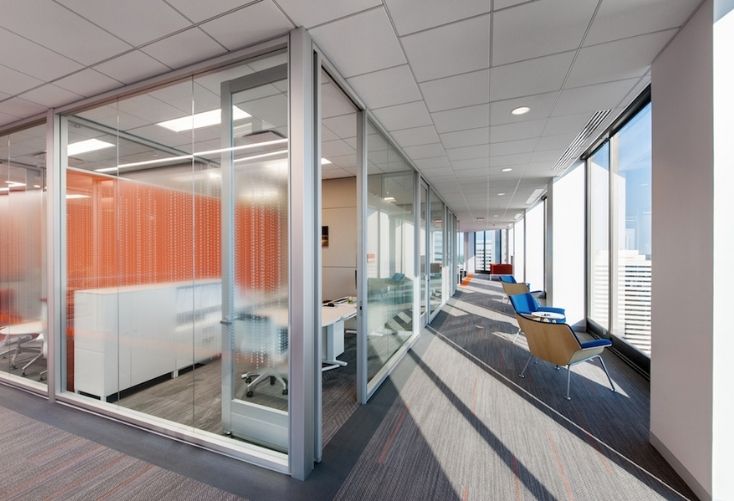
The Systems Approach
Office buildings, like the organizations they support, are really a collection of systems that work together to deliver business results. Our current standard workspace is predicated on a “one-and-done” model, a bespoke process that results in often beautiful spaces that can be very costly and disruptive to modify if needs arise.
The pandemic is the ultimate poster child for why that approach is problematic. In one day, many organizations went from, being together in the office to everyone at home learning how Zoom works. Of course, there was a learning curve but after a year and a half, we’ve learned to make this our new normal. Many prognosticators see working from home—or working from anywhere—to be the new normal.
The office will still exist but everyone may not be there every day or even all day. Right now, many office buildings with their many floors of office space look like a perpetual Saturday. A few of us are in, who is there is a little different every day, and there’s a lot of space that is at best underutilized or simply not used at all. It is hard to tell who is in or not, there is very low energy, and it’s simply not a compelling place to be. Is there a way to negotiate this new paradigm?
A model that allows an organization to flex up and down – as needs dictate – might be a model worth exploring.
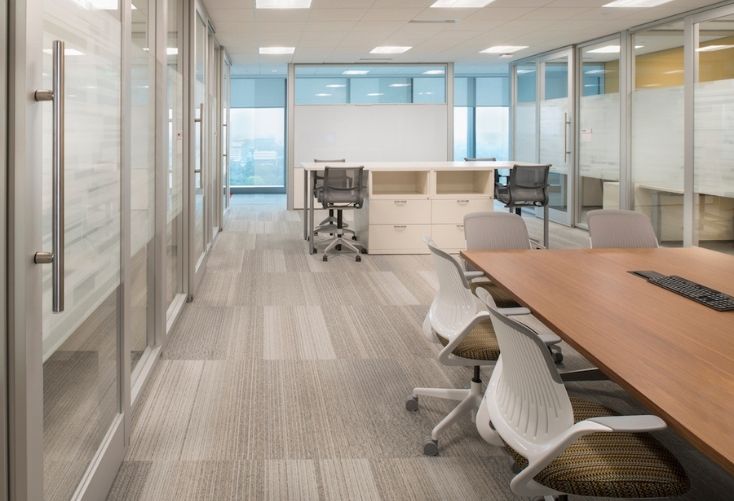
Think of the workplace in two realms, the strategic and the physical. The strategic aspect addresses the very reason for an organization’s workplace and leverages new models of workspace delivery between the real estate industry, landlords, building owners, and architects. In this arena, a lease might be structured to allow for fixed and flexible spaces that enable a tenant to grow or shrink depending on needs.
The landlord might provide a different kind of amenity, so a tenant is not beholden to provide it themselves. A tenant might be motivated to transfer the cost burden of a bespoke café or reception area to the landlord if branding, security, and amenity can be provided at a lower cost than if the tenant provided it themselves. Sky lobbies within the security of the building, rooftop gardens, cafes, conference centers, and fitness centers are examples building owners and landlords are currently rethinking. Coworking areas are almost de rigueur now for Class A office buildings in major cities.
The pandemic has taught us that the workplace—the whole experience of the workplace—needs to be part of a compelling package that will entice staff to work at the office. And while they may not be there every day, a friction-less, compelling experience is at the heart of what will cause employees to return to the office.
The physical—the actual physical space of the workplace—begins with rethinking floor plate size and shapes to better serve tenants. Indeed, simple moves with attention to dimensions, access to daylight, building modules, and core and structure arrangements can give a building incredible efficiencies for tenants and those efficiencies can translate directly to the organization’s bottom line.
This model starts with thinking more thoroughly of the workspace as this collection of systems. In the physical place, these systems fall into five broad categories: planning, ceiling, floor, wall, and furniture.

Planning Systems
What may look like a simple grid approach to effective planning is really a very thoughtful method that employs a system of modular planning to make all the spaces work as subsets or collections of subsets of each other.
A first step is to define the areas of the floor that should be flexible and the areas that might be fixed and permanent. The flexible zone needs to have the ability to morph and change with quantities and sizes of spaces possible. The fixed zone can house the spaces that won’t change—think of this as the lowest common denominator approach to locate spaces required no matter how the rest of the floor evolves. A large, uniquely outfitted conference room, or a branded coffee/café hub might be examples.
The foundation of this approach is developing a flexible zone and establishing a base module—the smallest unit from which all larger ones will be derived. We often call this the X-module or 1X. It is the smallest space that an organization can use and to be most flexible, it should be able to be either an open space or a closed one.
The building dimensions often drive the size of this basic unit—how many can fit along the length of the floor or within the loft depth, so care should be taken in deriving this important foundational piece.
Its offspring are the increasingly larger spaces and those are derived from what we call a Rule of Doubling. Starting with a 1X, the next largest space will be 2X, then a 4X, then an 8X, and infinitely up to the largest spaces. The idea behind the Rule of Doubling is that modules or clusters of modules might be able to be modified, removed, or added without disturbing adjacent modules. This is the foundation of accommodating overnight change.

Ceiling Systems
Ceiling systems work together with the planning system. If a modular space can be either an enclosed or open space, the ceiling needs to be able engage walls in to accommodate the planning grid. Lights, sprinklers, and ceiling materials themselves need work within this system.
Ideally the ceiling can be engineered once and no matter how the spaces below it move and change, if they adhere to the planning rules, the ceiling will not change at all. This is one of the concepts of flexibility: A rigid system of rules can actually be highly flexible and allow all the variability that the workers in the space might imagine.
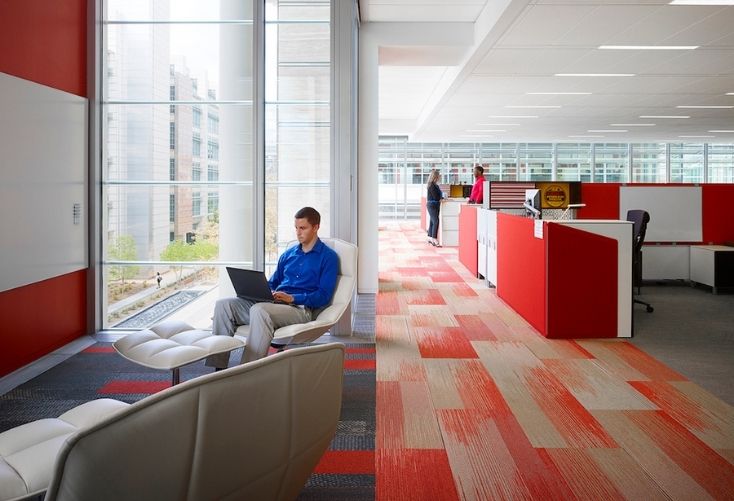
Floor Systems
In the ideal condition, the floor system is as equally flexible as the ceiling. By employing a raised access floor system, this ideal condition is how both air conditioning and data systems are distributed. The main distribution is fixed under the floor and responds to the planning systems approach, but the final step to each user can be tailored to the exact layout of furniture and workspaces. Additionally, this final step allows the user to have unique and personal control at each seat: cool air that can be increased or decreased at the spot of use, and easy plug and play connection to data systems.
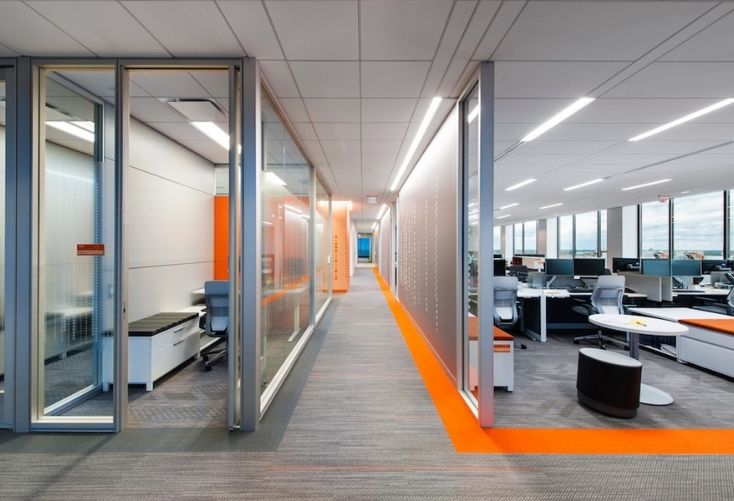
Wall Systems
Truly demountable wall systems that work within the framework of the planning system are a critical piece of this new flexible space approach. Someday, walls may be simple for even the users within the space to move and reconfigure themselves. Basic wall units themselves can be similar and replicated for scalability across a large workspace, inexpensive, but unique and custom skins can allow personal and organizational customization and branding on a micro level.
Walls can be “dumb” to make them easier to move and reconfigure. Access to power can be limited to the floor or the ceiling only so walls need only attach to a ceiling grid or a floor plane for stability. Devices that might hang on a wall do so easily, without special modifications to the wall itself, and if they need to plug in for power or data, do so at the floor.
Furniture Systems
Furniture manufacturers are already moving to a model of easily movable furniture components. Power outlets are available at tabletop or desktop but plug into the floor system safely and simply. Furniture can be modified to provide semi-private solo seats for focus work or rearranged for team spaces— by the employees themselves. Divorced from the wall systems, furniture is truly flexible.
The furniture is another opportunity for personalization and branding at a micro level. Panels or screens can be tailored for a unique appearance and look. Color and material, high or low configurations, private or open arrangements are all simple user interfaces to promote unique solutions at even the most granular level.
In today’s model, these systems are often procured by each tenant through a painful process of networks, RFPs, mockups, evaluations, and spreadsheets. The purchasing power of a building landlord or developer might better deliver products that are often reduced to lowest common denominator analysis and simply commodified. The application of systems that provide this 80% correct model with the ability to tailor the last 20% to each tenant would allow an approach of cost-consciousness with mass customization. That model is how we buy for almost all parts of our lives—think clothes, cars, restaurants, travel, or any host of all kinds of things.
But this systems approach is the key to flexible space use. Thinking of floors as templates for flexible use and thinking about bundling amenities as not simply nice to haves, but rather imperatives, this combination of an amenity approach of the building offering, with the flexibility of the workspace template can be a compelling and desirable place to help an organization thrive and their people do and be their best.


 Dr. Gleb Tsipursky – The Office Whisperer
Dr. Gleb Tsipursky – The Office Whisperer Nirit Cohen – WorkFutures
Nirit Cohen – WorkFutures Angela Howard – Culture Expert
Angela Howard – Culture Expert Drew Jones – Design & Innovation
Drew Jones – Design & Innovation Jonathan Price – CRE & Flex Expert
Jonathan Price – CRE & Flex Expert
